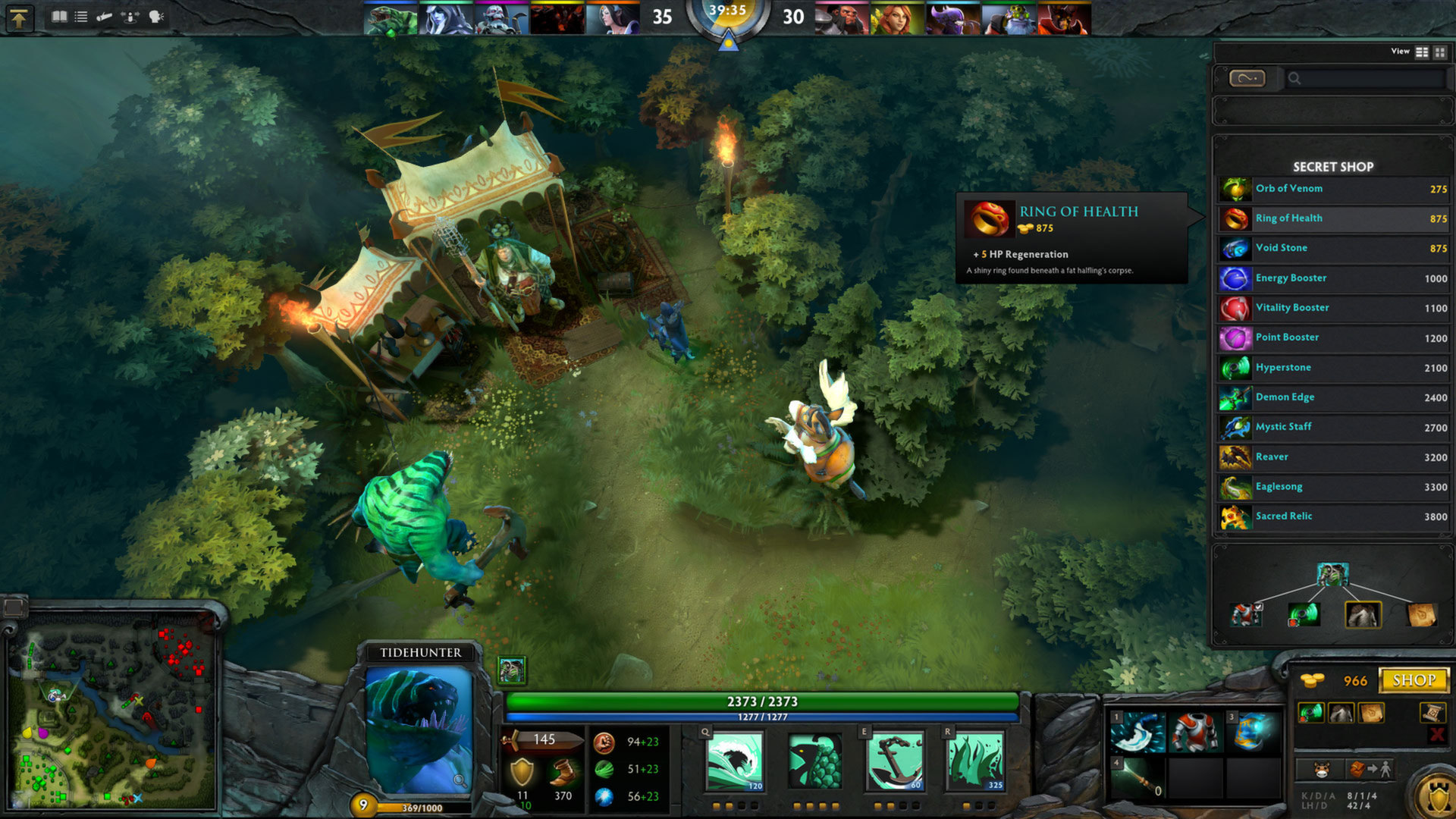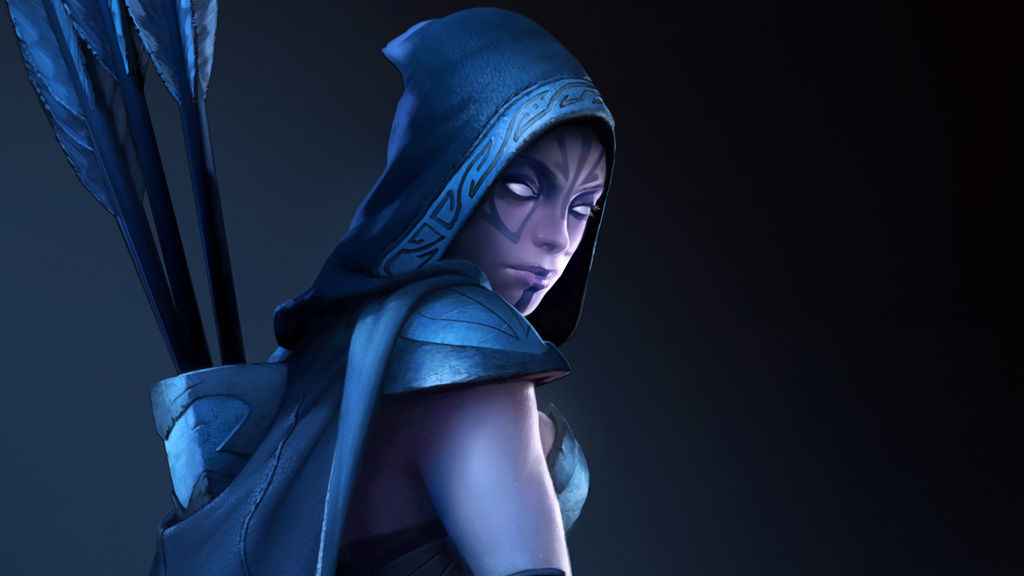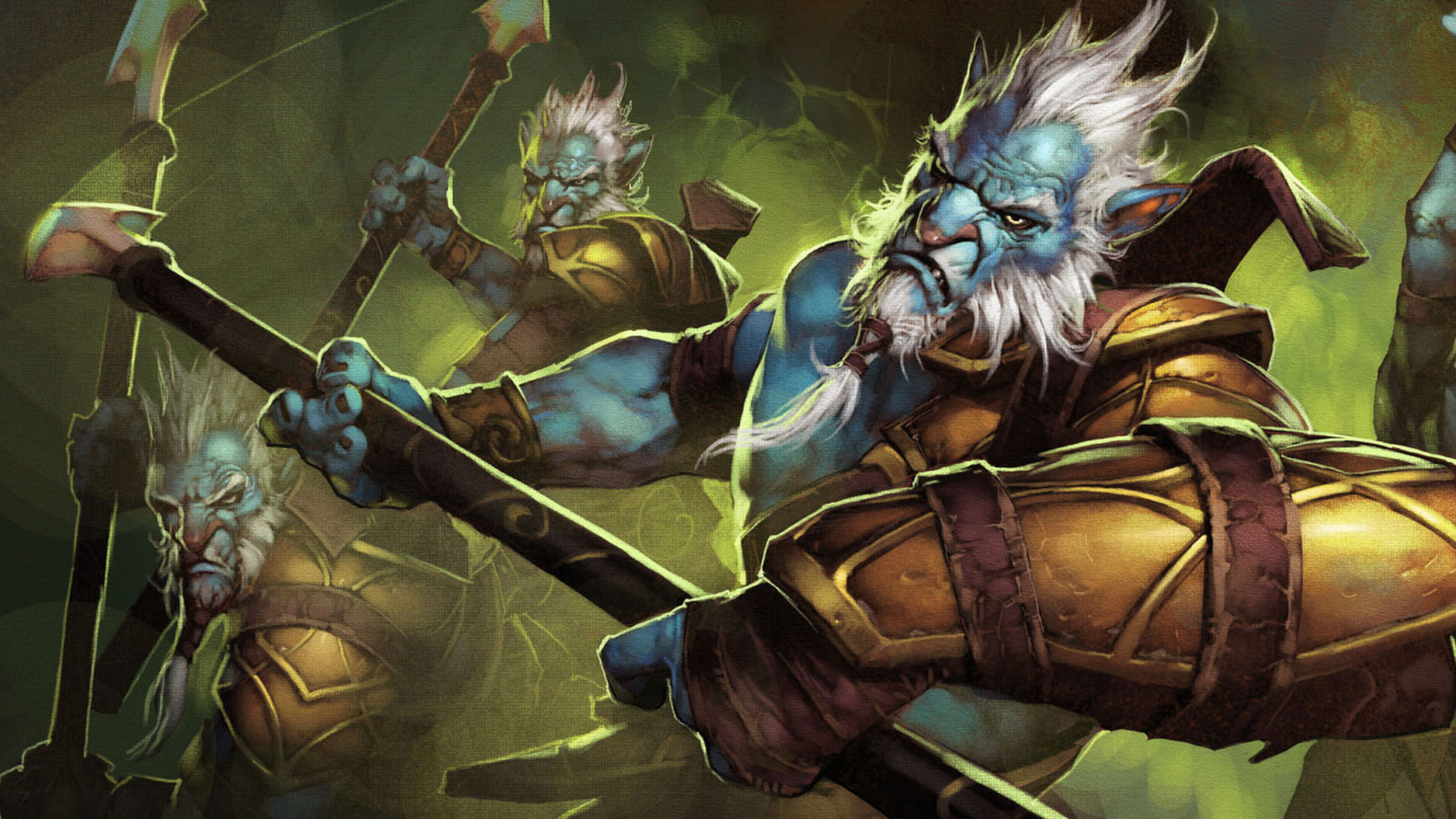Irresistibly colorful on the surface, Dota is a game of infinite depth and complexity. Every hero has an array of skills and abilities that combine with the skills of their allies in unexpected ways, to ensure that no game is ever remotely alike. This is one of the reasons that the Dota phenomenon has continued to grow. Originating as a fan-made Warcraft 3 modification, Dota was an instant underground hit. After coming to Valve, the original community developers have bridged the gap to a more inclusive audience, so that the rest of the world can experience the same core gameplay, but with the level of polish that only Valve can provide.
Get a taste of the game that has enthralled millions.

Welcome back to Between the Lanes, a blog feature where we let members of our development team walk through some of the challenges, bugfixes, and occasional happy accidents we encounter while working on a game as unique as Dota, and an event as unique as The International.
The International is an unbelievably huge endeavor, watched by millions of people around the world. Its easy to forget that the first ever TI was a modest, honestly pretty unrecognizable event held at Gamescom 2011 in Cologne, Germany, and took place in a trade show booth. In honor of TIs humble beginnings, we decided to dedicate this installment of Between the Lanes to an often forgotten, rarely celebrated (and occasionally very poorly ventilated) piece of equipment thats been with us since the very beginning, and ever since (except last year): the soundproof booth.

From TI1, we knew wed need booths with sufficient insulation so the players wouldn't overhear anything from the crowd or casters thatd give them an unfair advantage during the match. Back then, that was the only requirement of the soundproof booths: They needed to be soundproof. And because the first TI was so small, there wasnt that much audio slamming the booth at any given time. But those early booths fulfilled their one requirement: none of the pros could hear anything. Of course, they failed utterly in every other area, which meant that, by the time future TIs rolled around, we needed them to do a lot more.

The first TI was a real learning experience in general for us. The desks the pros were playing on ended up being too narrow and too high. So the players had to sit on stools with their elbows hanging off the edge of the desk, which it turns out is just about the worst way to play DOTA. We also had these enormous PCs that Nvidia had lent us, and wed placed them into a series of cabinets under the players. These cabinets, it turned out, were unventilated. The Nvidia PCs ran unventilated for seven days straight. It was so hot in those cabinets, when you opened the doors you could smell the insulation on the wires melting. Amazingly, they never stopped working all week. (It's entirely possible the only reason they didn't overheat was because one of the players accidentally spilled some ice water into the cabinets.)

So now we had a second booth requirement for subsequent TIs: Air conditioning. It turned out that five PCs, five monitors, five humans and various lighting rigs, all sealed in an insulated unventilated box, generates a LOT of heat. Being able to reduce that heat was both essential and non-trivial.

Another new requirement wed never considered: Reflection. The very original booths were rectangular pods that abutted each other, face-to-face. The glass surfaces were flat on the front and the back. So when players were sitting in the playing position, their screens would reflect off of the glass behind them, and the opponent directly opposite them could pretty clearly see the reflection of their screen. We discovered that problem very quickly. Our immediate high tech solution: tape a bunch of promotional T-shirts to the glass between the players to block the reflections.

Going forward into the next decade of TIs, we abandoned the T-Shirt solution and fixed the problem with booth design and positioning.
By the time TI5 rolled around, and with no false modesty, wed gotten pretty good at the basics. Sound-dampening: check. Better lighting: check. Ventilation: check. Pink noise in the booth: check. Solving the dozen or so immediate problems that kept cropping up during the first few TIs meant we could finally stop putting out fires and focus on making the booth better. It was finally time to tackle a long-standing problem: the booths were a huge pain in the ass to assemble. The TI2-4 booths took a really long time to put together. They were ungodly heavy and hard to manage. It took a small crane to put the roof on, not to mention 12-15 hours of build time.

TI2

TI3

TI4
For an event as big as TI, with so many moving pieces, that can be a problem. Everythings on a pretty tight schedule. The second the stage is ready for them, those booths need to be moved up onstage and put together, fast. Once theyre assembled, you have to very quickly get the lighting in them, the PCs, the chairs, booth cameras, microphones and team communications set before any testing can begin. The faster you get the booths up and running, the more time you have to test the setup. So the biggest innovation between the TI4 and TI5 booths was how speedily the TI5 version could be assembled onstage with the clock ticking.


Composed of seven sections, each one is mounted on wheels for easy positioning once forklifted onto the stage, attached to the one another via a coffin lock system. With these innovations, the booths were able to be fully assembled in under five hours.
As the events got more elaborate, so did the challenges, and that meant more advanced techniques in booth design. The TI2-4 booths only had a single glass wall. But the fifth TI was going to take place in the round, on a circular stage with 360 views; so now the booths needed to be transparent on all sides, so the audience could see the action.

With the audiences getting larger and louder, and the booth walls now being entirely made of glass, sound-proofing became a legitimate challenge. The new walls would now be constructed of multiple layers of glass, with argon gas in between the layers. The glass layers were different thicknesses, and not exactly parallel to each other, which helped dampen the sound waves. (We also upgraded to optically transparent museum quality glass, which is much better for filming through. It has so few imperfections that its essentially transparent to the lens.)

By the time wed perfected the booths for TI5, the total price tag for each one was over $200,000. (All that argon wasnt cheap.) The irony is that, over the course of six Internationals, wed managed to engineer an essentially perfect sound booth which we then had to put in dry dock, because it turns out they couldn't be shipped internationally.
How did we learn this? By shipping them internationally to the Frankfurt Major in 2015 and destroying them in the process. We had to repair and rebuild them on-site in Germany. It was a huge hassle. The booths are capable of a lot, but theyre just not designed for long haul travel.

We continued to iterate over the next several years, doing gradual but significant improvements to player comfort, booth lighting and other incremental changes. By the time we arrived at last years TI in Singapore, we had accumulated a decade of experience with sound dampening, and this gave us the confidence to try a new approach. We decided to eliminate the booths entirely, and solve the sound problem with noise-canceling headphones, earbuds, and the acoustic design of the arena. This meant we could maintain the competitive integrity that the booths provided, while optimizing for all the things that the booths historically made difficult.
Something a lot of people don't realize is that pro Dota players don't simply wake up and walk onto an event stage. They have to warm up just like any athlete. They also prefer their tools of the trade keyboard, mouse, headset worn out just the way they like them, in just the right spot. With booths, this meant a challenging set of steps where player equipment was constantly being stripped out of the play area so new gear could be carried in and set up at the last second. This made it difficult for players to enjoy a pre-game warm-up with their equipment when a TI event coordinator was trying to pry their keyboards from them to race it over for a booth setup. A boothless set-up with four rotating sets of PCs completely removed these issues, which resulted in a streamlined set-up, takedown and speed of play an improvement appreciated by the pro players.

But sound-dampening is simply too important a trade-off. And despite our efforts put into the acoustic design of the arena, we underestimated the difficulty in bringing the sound-dampening up to our standards. Do we think a boothless event is an experiment worth pursuing again? Absolutely. There were real advantages, for the players and the spectators. But not until we have absolute confidence in our success. What matters is that were heading in the right direction: Towards something better, faster, more enjoyable for the pros competing, and more exciting for us watching.
Until then, were happy to bring back the classic TI5 soundproof booths out of storage in Kent, WA, to once again grace the main stage at The International 2023.
Minimum Setup
- OS: Ubuntu 12.04 or newer
- Processor: Dual core from Intel or AMD at 2.8 GHzMemory: 4 GB RAM
- Memory: 4 GB RAM
- Graphics: AMD GCN+. NVIDIA Kepler+. or Intel HD 5000-series or newerNetwork: Broadband Internet connection
- Storage: 60 GB available space
[ 6431 ]
[ 7154 ]
[ 3653 ]
[ 5363 ]













































